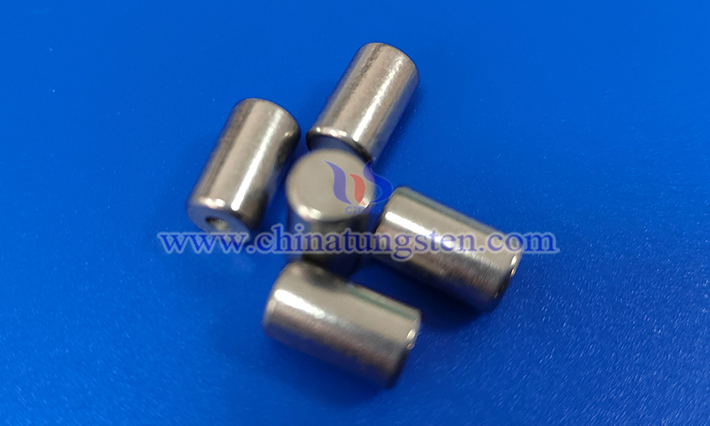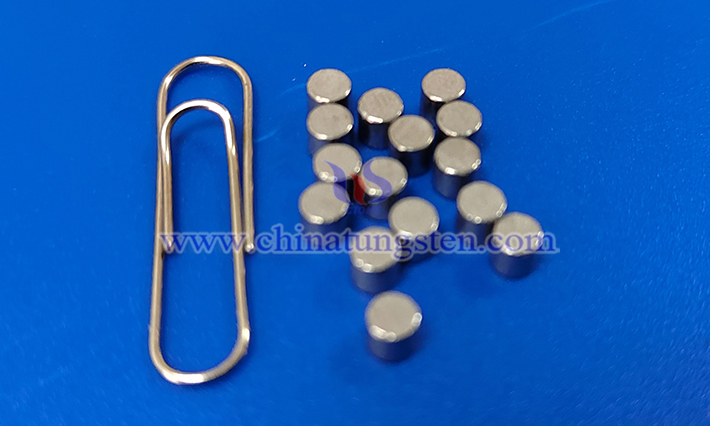Factors Affecting the Electronic Work Function of Barium Tungsten Electrode
- Details
- Category: Tungsten Information
- Published on Tuesday, 03 June 2025 18:46
The electronic work function of barium tungsten electrode is its core performance indicator, which directly affects its emission efficiency, operating temperature and life as a hot cathode. The factors affecting the electronic work function of barium tungsten electrode mainly include the following aspects:
1. Material Composition
The chemical composition of barium and tungsten in the electrode directly affects the electronic work function. The purity of barium and tungsten and their different ratios will cause the work function to change. For example, high-purity materials or specific barium tungsten ratios may optimize the electronic escape performance.
2. Surface State
The cleanliness, roughness and presence of an oxide layer on the electrode surface will significantly affect the work function. Generally, a clean and smooth surface has a lower work function, while surface contamination or the presence of an oxide layer may increase the difficulty of electron escape.

3. Crystal Structure
The crystal structure and lattice defects of barium tungsten electrode materials have a certain influence on the work function. The electron work function of different crystal planes may be different, and lattice defects may also change the electron escape characteristics.
4. Pore Structure
The porosity and pore size distribution of the porous tungsten matrix affect the storage and diffusion of barium and determine the stability of the surface barium supply.
5. Preparation Process
The appropriate sintering and activation process plays a decisive role in the formation of a low work function surface. Appropriate heat treatment and annealing will change the microstructure of the electrode, thereby affecting the work function.
6. Working Temperature
Temperature affects the diffusion and evaporation rate of barium atoms, as well as the adsorption, desorption and migration behavior. Too low or too high temperature will lead to an increase in the work function.

7. Electric Field Strength
Under a strong electric field environment, the electron work function will be reduced due to the Schottky effect. The effect of the electric field can reduce the surface potential barrier, making it easier for electrons to escape, but it may also accelerate surface damage.
8. Lighting
Lighting may induce the photoelectric effect and affect the ability of electrons to escape. Under the action of light of a certain wavelength, electrons may gain additional energy, thereby reducing the work function.
9. Surface Adsorption
Gas molecules or other substances adsorbed on the surface of the electrode can change the work function. For example, adsorption of oxygen may increase the work function, while adsorption of certain metal atoms may reduce the work function. This effect depends on the nature of the adsorbate and its interaction with the surface.
10. Aging
After long-term use, the electrode may age due to material loss or surface changes, causing the work function to gradually change over time. This effect is particularly evident in long-term operating devices.
11. External Environment
The environment in which the electrode is located (such as vacuum, composition of the surrounding gas) affects its surface state and thus the work function. For example, low vacuum or the presence of certain active gases may react with barium, resulting in an increase in the work function; metal vapor or oil vapor from other parts of the electrode or tube can be deposited on the surface, covering the active layer and destroying the low work function characteristics.
- Chinatungsten Online: www.tungsten.com.cn
- CTIA GROUP LTD: en.ctia.group
- Tungsten News & Price: www.ctia.com.cn
- Molybdenum News & Price: news.molybdenum.com.cn
- Tel.: 86 592 5129696; Email: sales@chinatungsten.com



 sales@chinatungsten.com
sales@chinatungsten.com